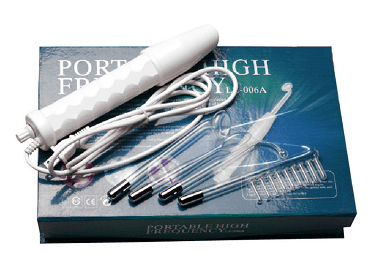Medical procedures >>>> How does darsonval treat?
How does darsonval treat?

The darsonval apparatus is used for superficial effects on the skin, muscle and mucous membranes in order to activate metabolic processes, restore and accelerate tissue regeneration, activate reflexes, and antibacterial effects.
Darsonval acts by producing high frequency alternating current on locally located tissue sites. A contact and non-contact method of influence on tissues is used: contact - due to the imposition of a nozzle on the tissue, non-contact - due to the passage of a spark between the device nozzle and the surface of the skin or mucous membrane.
Indications for the use of darsonval:
- elimination of cosmetic skin defects (fine wrinkles, skin laxity),
- healing of microtraumas of the mucous membrane and skin,
- acne and skin acne treatment,
- varicose blood vessels,
- vasculitis,
- numbness,
- disturbances in the conduction of nerve fibers,
- neuralgia and neuritis,
- treatment of inflammation and itching.
There are a number of contraindications to darsonval, which in many cases outweigh the need for a therapeutic effect from this physiotherapy:
- the presence of obvious or suspected benign tumors (can activate carcinogenesis and turn the tumor into malignant),
- the close location of the vessels to the surface of the skin on the face (provokes a deterioration in the condition in suffering from "Rosacea",
- purulent, fungal, viral lesions of the surface of tissues (does not have a significant antimicrobial effect),
- blood diseases,
- bleeding tendency or presence,
- couperosis,
- arrhythmia,
- severe hypertension,
- the presence of implanted metal structures in places where the device is exposed,
- hypersensitivity to electric shock,
- high temperature,
- epilepsy,
- heart failure.
What does darsonval cure? The device, in contact with the skin or mucous membranes, acts with a current discharge and thereby heats the tissues, activating capillary blood flow in certain areas. Blood is a set of nutrients and agents of cellular immunity, which, rushing to the desired area, improve the trophism (nutrition) of tissues at the site of exposure to the device and through immune factors contributes to the extinction of inflammation, reduces microbial activity, increases the reparative properties of tissues (the ability to restore, regenerate).

Read

Read



























